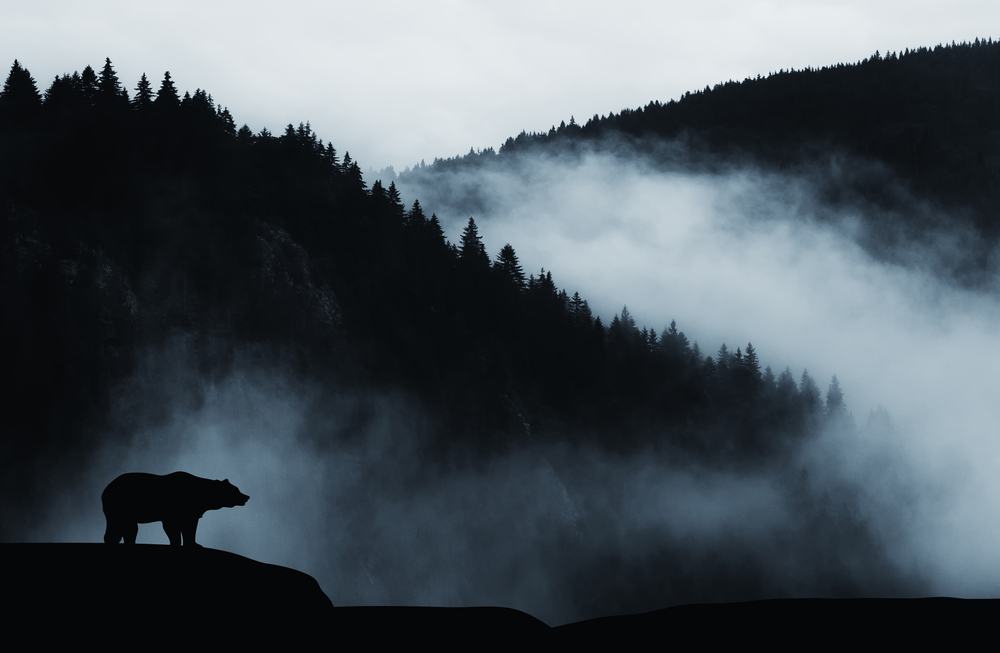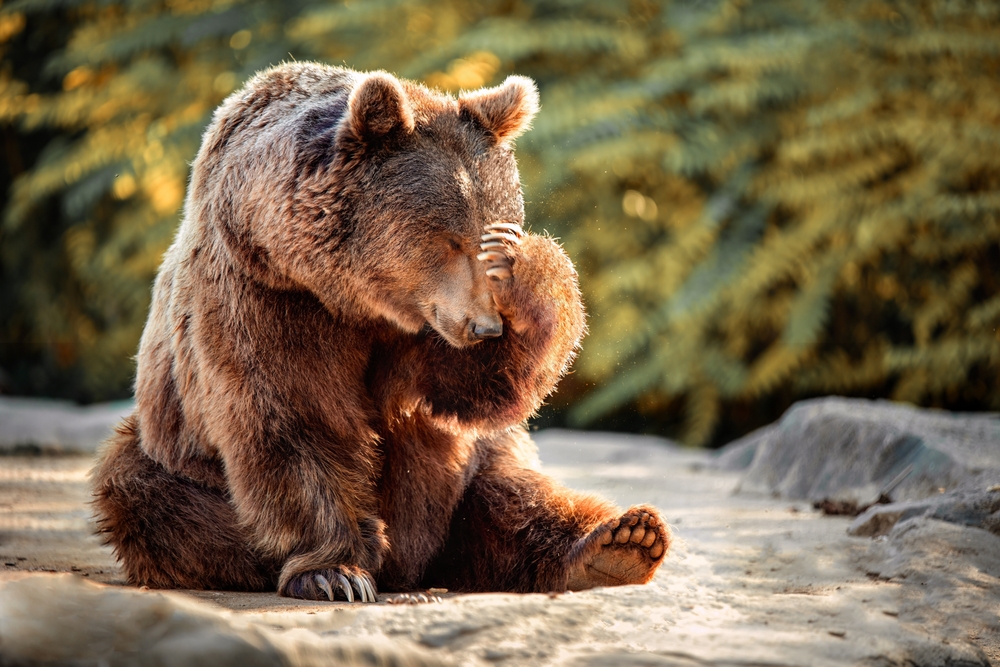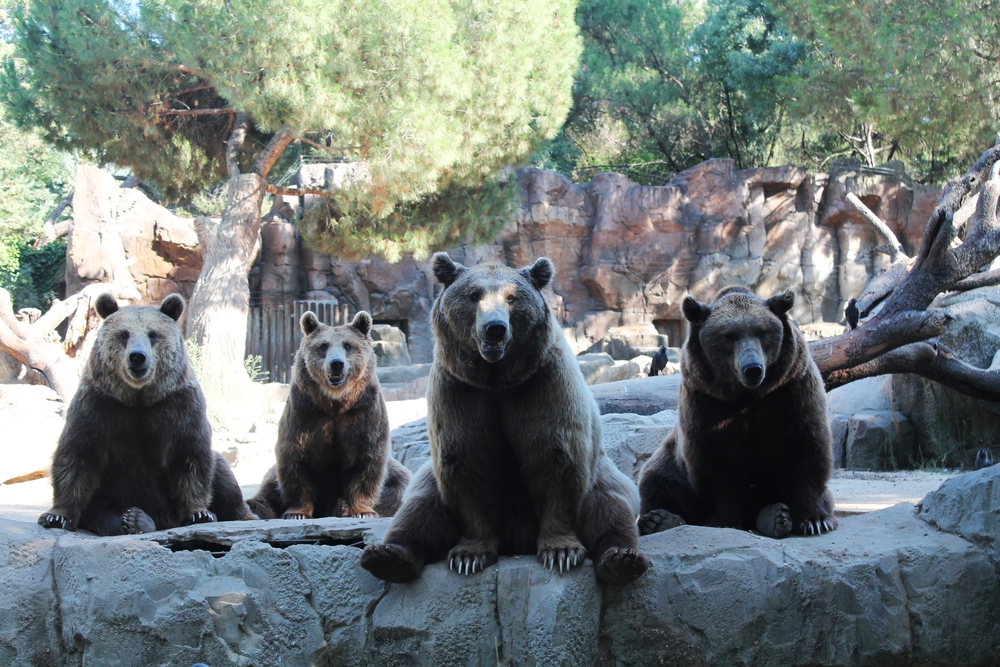
Every animal thrives in its natural habitat, and bears are no different. Bears have evolved and adapted over millions of years to live in specific environments, and their natural habitat provides the necessary resources and conditions for their survival and well-being.
Bears are considered a keystone species, meaning they have a disproportionately large impact on the balance and functioning of bears habitats. They contribute to seed dispersal, nutrient cycling, and plant diversity through their foraging behavior. Bears also help control herbivore populations, which prevents overgrazing and allows vegetation to thrive.
If bears were to disappear from their ecosystem, no other species would be able to fill their ecological niche. This means that their absence would force the ecosystem to change radically, allowing new and possibly invasive species to populate the bears habitats. Let’s take a closer look at the ecosystem of bears and what makes these iconic creatures such vital members of their ecosystem.

Bears are significant dispersers of seeds in their habitats. That’s because they consume lots of fruits and berries very fast and pass the seeds through their digestive systems undamaged. They then deposit the seeds through their scat in different areas as they move around their territories.
This dispersal mechanism helps plants colonize new regions and promotes genetic diversity within plant populations. As the seeds germinate and grow, they contribute to establishing new vegetation, supporting a variety of wildlife. The dispersal of seeds by bears is particularly crucial for the regeneration and expansion of plant communities, ensuring the resilience and adaptability of ecosystems.
Bears also play a massive role in regulating prey populations. As opportunistic predators, they control the abundance of herbivores such as deer, elk, and smaller mammals. This helps prevent overgrazing and the subsequent degradation of vegetation.
As a result, it ensures the health and integrity of the ecosystem. Besides, bears scavenge on carrion, consuming carcasses left behind by other animals. Recycling nutrients and organic matter facilitates the overall nutrient cycling within the ecosystem, sustaining the web of life.
Lastly, bears enrich forest soil through their feeding habits and subsequent scat deposition. As omnivores, bears consume a diverse range of plant and animal matter. When they eat vegetation, the nutrients are processed in their digestive system and released through their feces.
These droppings, rich in nitrogen, phosphorus, and potassium, act as a natural fertilizer and promote the growth of various plant species. The increased plant growth, in turn, supports the entire food web within the ecosystem, benefiting both herbivores and other predators.

Bears face numerous challenges that threaten their survival and conservation efforts. These threats arise from:
Human activities such as deforestation, urbanization, agriculture, and infrastructure development fragment and destroy bears' habitats. As a result, bears find it increasingly difficult to find adequate food sources, mating opportunities, and suitable denning sites. It also increases the likelihood of human-bear conflicts as bears are forced closer to human settlements.
Rising temperatures, altered precipitation patterns, and changing ecosystems profoundly affect their habitats. Polar bears, for example, are particularly vulnerable as melting sea ice reduces their access to vital hunting grounds and affects their ability to hunt seals, their primary food source. Similarly, changes in food availability and plant phenology due to climate change can disrupt the foraging patterns and reproductive success of other bear species.
While bears are well-adapted to cope with natural threats like disease outbreaks, competition with other predators, and natural disasters can affect their populations. For example, natural disasters like wildfires or severe storms can destroy habitats and disrupt bear populations.
Unregulated hunting and poaching for their body parts can drive bear populations to decline rapidly. Similarly, human activities like recreational activities, tourism, and development, can disrupt bears’ way of life and lead to altered movement patterns, reduced reproductive success, and increased human-bear conflicts. It is important to highlight that 85 percent of all wildfires in the United States are a consequence of human actions, resulting in the loss of an untold number of wildlife and their habitats.

Bear conservation efforts are crucial for protecting and preserving bear populations and their habitats. Today, many non-profit organizations, governmental agencies, and local communities are actively involved in various bear conservation initiatives and efforts. For example:
Organizations like World Wildlife Fund (WWF) focus on raising public awareness about bear conservation, the importance of biodiversity, and the ecological role of bears. They work to protect bear habitats, address human-bear conflicts, and advocate for policy changes that support bear conservation efforts.
International Association for Bear Research and Management (IBA) is also committed to advancing the scientific understanding and management of bear species. They promote research, conservation, and management practices that contribute to the long-term survival of bears.
Bears are protected through national and international regulations, laws, and conservation efforts. These protections safeguard bear populations, preserve their habitats, and reduce human-induced threats.
Lions Tigers & Bears is also dedicated to protecting bears and the encouraging news is that you can contribute as well by supporting organizations like ours through donations or volunteering. Bear conservation relies on collective efforts, and by joining together, we can create a positive impact.
Read the stories of all twelve rescued bears currently residing at LTB, including Rocky, and:
Delilah and Blossom were lone residents at the Little River Zoo in Norman, Oklahoma, after the closure of the facility due to financial issues. LTB rescued these two ill-nourished black bears and provided them a safe home where they share their habitat with four other black bears - Liberty, Meatball, Maddie, and Sugar Bear.

Ph: 619.659.8078
Fx: 619.659.8841
[email protected]
24402 Martin Way, Alpine, CA 91901